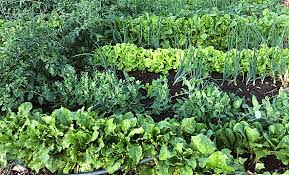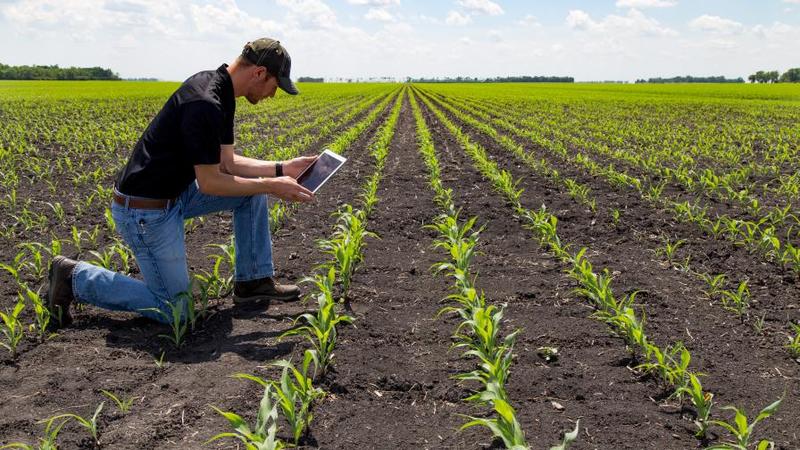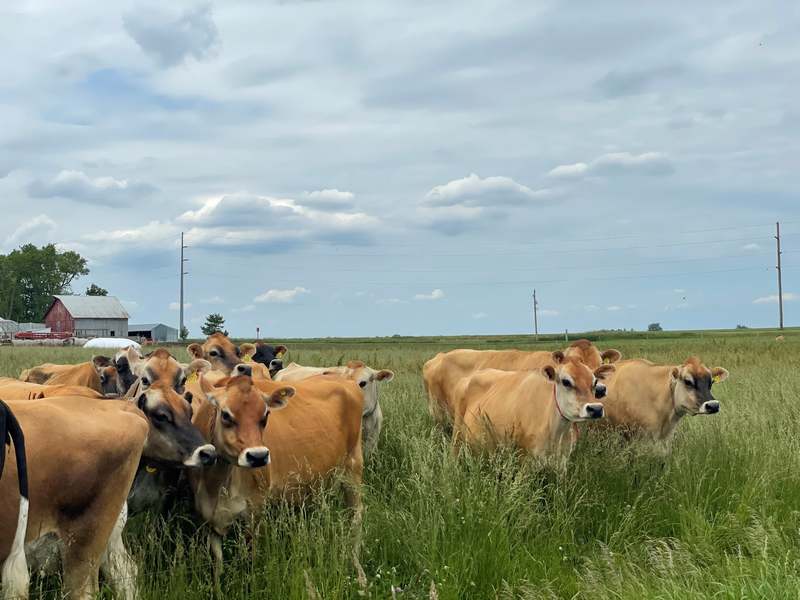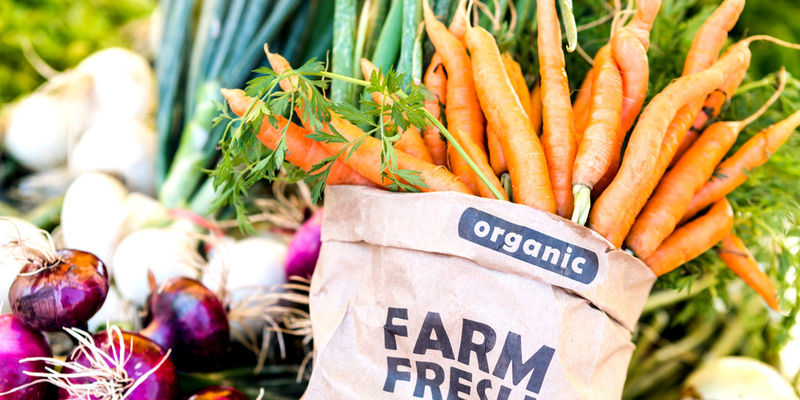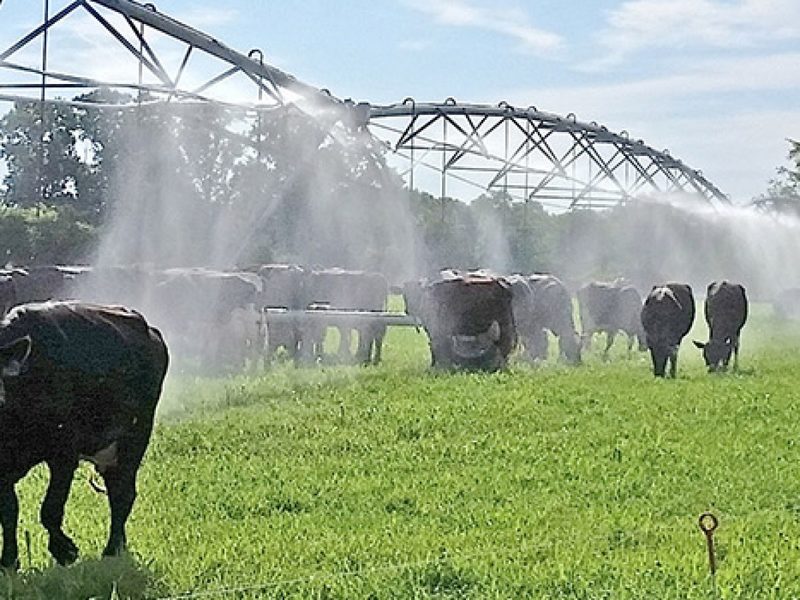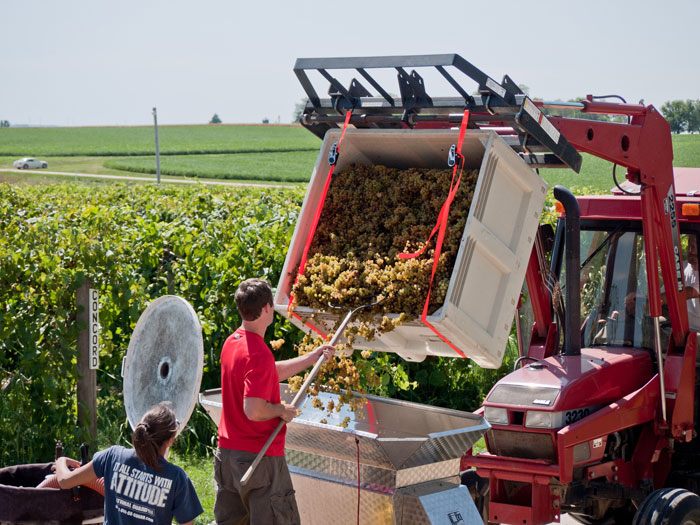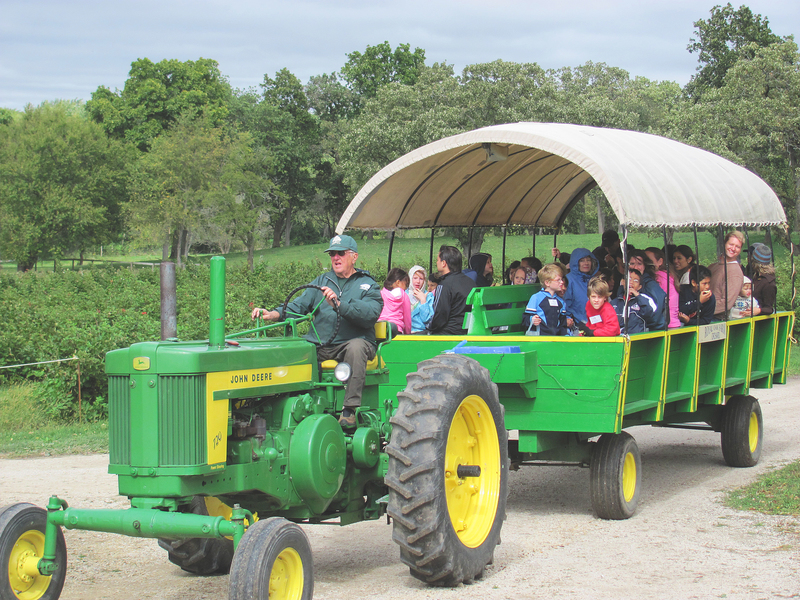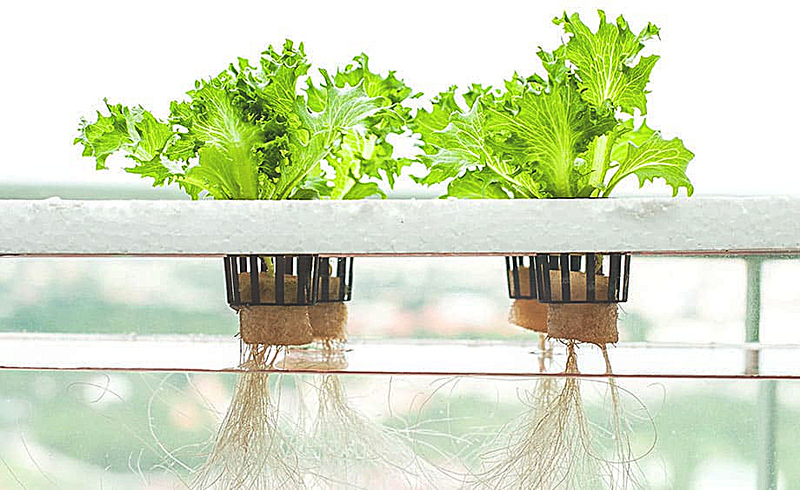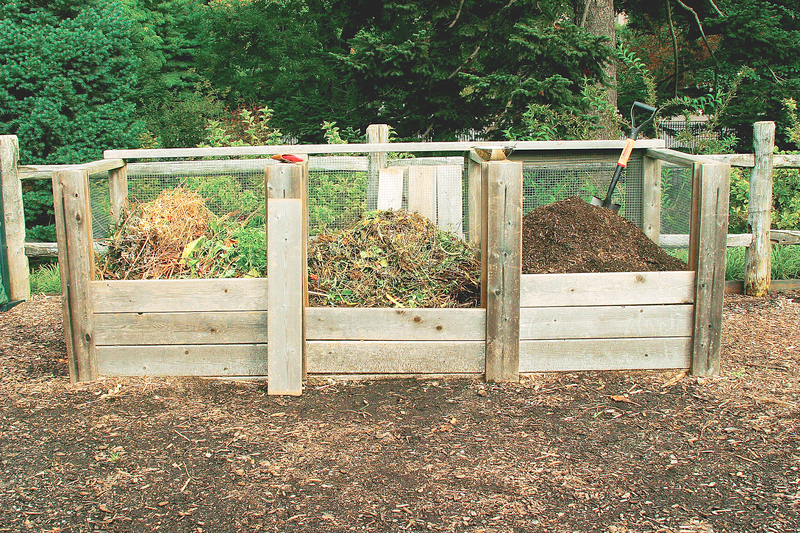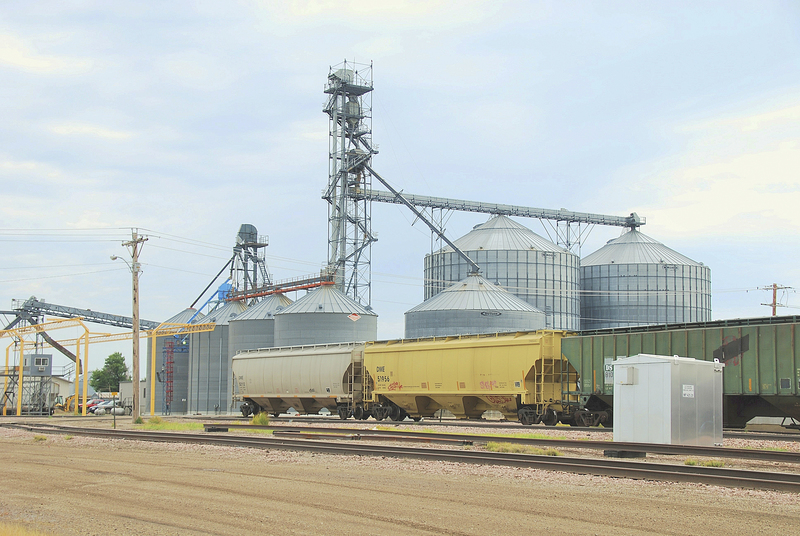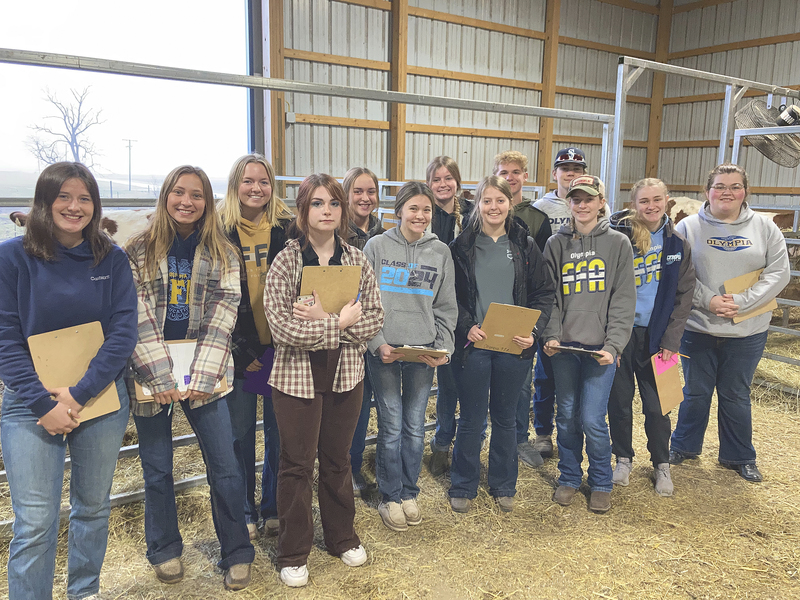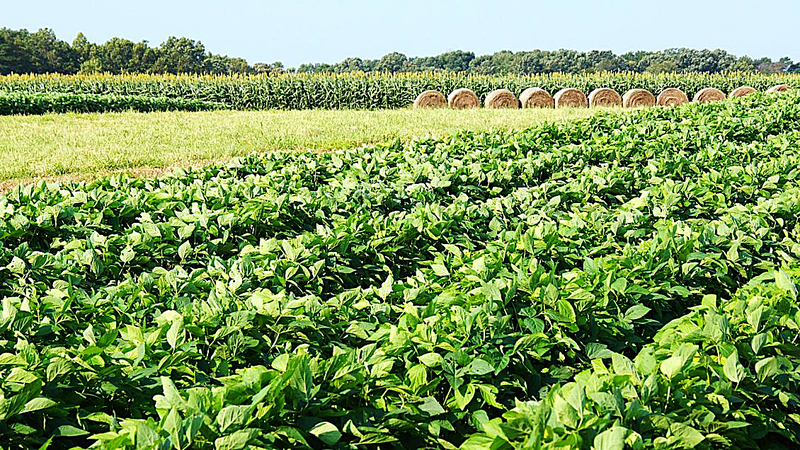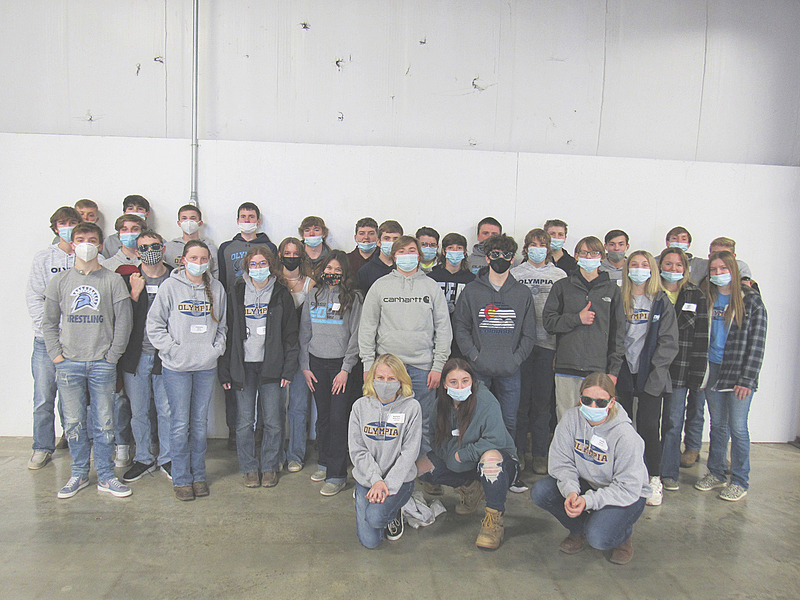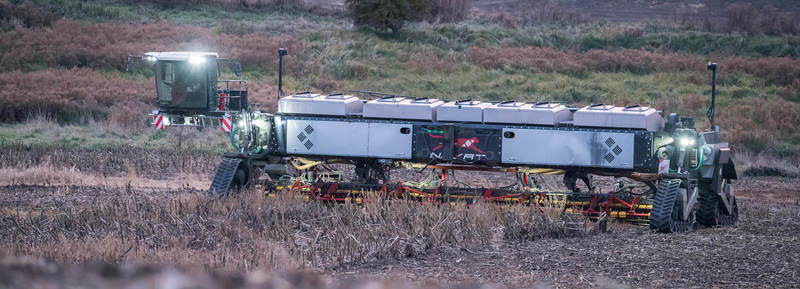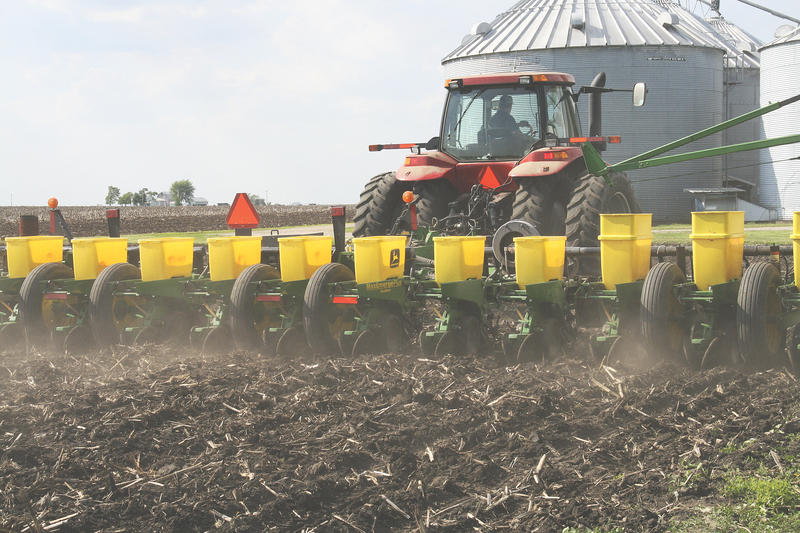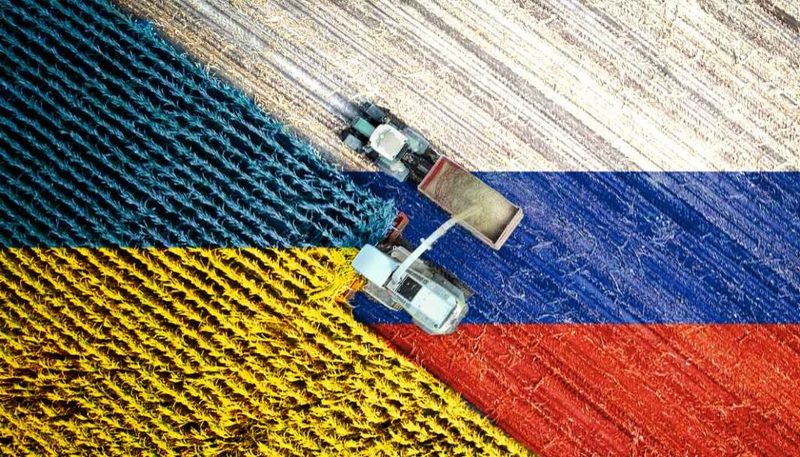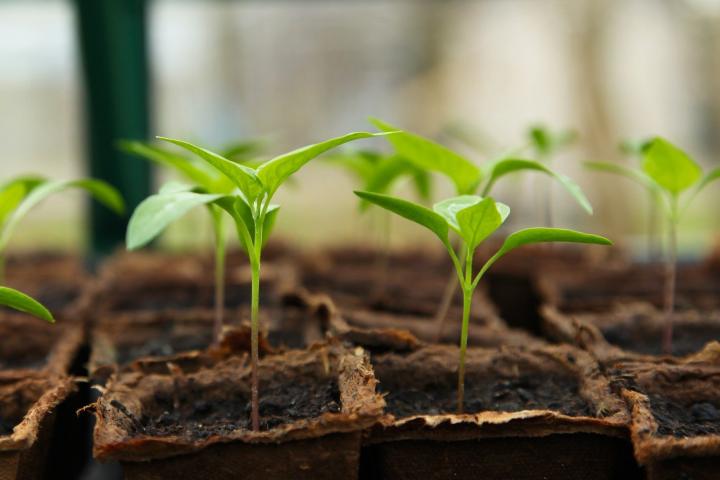Temperatures are looking to rise again this week, making now a great time to talk about how to help care for your garden crops in the hot and dry times of summer. Late July through August can tend to be very hot and it is important that you are taking proper care of your crops to get them through when they are ready to be picked from the garden. Some plants can tolerate the heat better than others. When you consider that most plants are made up of 85 to 90 percent of water, it makes more sense why plants need extra attention in the heat.
Crop scouting is when fields are evaluated for pest and disease problems, or for checking in on growth progress. Scouting is important because if a problem of any kind is found in the field, it can be solved or managed as quickly as possible. This process is critical for farmers to grow their best crops and have the highest yields possible, which allows them to make the most profit. Crop scouting is a critical tool to protect a farmer’s investment in each field.
Like many holidays, the Fourth of July is connected to agriculture! In the spirit of celebrating our Independence Day this weekend, we can look at a quote about agriculture from Thomas Jefferson. The Founding Father and former president stated, “Agriculture.. is our wisest pursuit, because it will in the end contribute most to wealth, good morals, and happiness…”. Jefferson proclaimed the importance of agriculture in our country in a letter he wrote to George Washington.
All dairy products like milk and cheese start by the production and care of dairy cows on a dairy farm. Dairy farming is when farmers raise mother animals and use their milk to feed humans. Other dairy products than milk and cheese include butter, yogurt, ice cream and more. Byproducts from dairy farms are even used for nonfood purposes. Byproducts allow for an operation to produce more goods and be useful for as much as they possibly can.
When you look through a produce section at the grocery store, you will likely find both organic and nonorganic items for sale. To be labeled organic, foods must meet United States Department of Agriculture (USDA) standards. Companies or farmers can not just label something “organic” without meeting these standards. The USDA sets organic standards for crops and livestock, as well as the handling process.
It is summer time now and planted crops are showing throughout our area. When you look into the fields, you can find small corn and soybeans plants. Farmers that grow hay are looking to cut and bale their crop, then it will go through the growing cycle again. Now that crops are in the ground, farmers will monitor them for weed control, any fertilizer needs, or other pest management practices. On the livestock side, chores to care for the animals likely stay the same. However, during the hot summer months farmers will ensure that their animals are being checked frequently for signs of overheating and put preventative measures into place. Farmers with livestock also may be preparing their animals for fair season and livestock competitions.
On Wednesday, June 1st, the United States Secretary of Agriculture, Tom Vilsack, announced during a speech at Georgetown University that the United States Department of Agriculture (USDA) has a framework set in place to transform the food system. Vilsack stated that, “The pandemic exposed the weaknesses of a food system built around large-volume production and national supply chains,” according to Successful Farming. The framework that is in place will benefit consumers, producers, and rural communities. It will accomplish this through providing more options, increasing access, and creating improved markets for small and mid-size producers.
Last week we discussed what agritourism is and some of the agritourism that our area has to offer. Mackinaw Valley Winery is located on Route 9 just a few miles outside of Mackinaw, IL between the towns of Mackinaw and Danvers. 2022 is the 19th Anniversary of the winery being open for business and the 25th year that the vineyards have been in operation. Paul Hahn is the founder of the winery and his wife, Diane Hahn, is the manager. Diane explained, “My husband Paul founded the winery and vineyards. He started growing in 1997 and in 2003 we opened to the public with the winery tasting room.”
The University of Illinois Extension defines Agritourism as “any business activity that brings the public to a farm or rural setting in an effort to market farm raised or produced products or for the enjoyment of related outdoor activities”. Oftentimes you will find agritourism as small, local businesses on the main streets of local communities or locations just outside of rural communities. Popular examples of agritourism in Illinois include pumpkin patches, berry farms, orchards, wineries, corn mazes, farmers markets, bed and breakfasts, and more! The diversity of these businesses offers a wide variety of products and services to their visitors, who are typically consumers who enjoy the experience of visiting the location as much as what they may purchase from there.
Agritourism helps rural communities grow economically. The United States Travel Association states that travel and tourism is an over one-billion-dollar industry for the U.S. and generates more than 9 million jobs. The last Census of Agriculture was taken in 2017 and said that 28,575 farms offered agritourism and recreational services that year. Those 28,575 farms generated 949 million dollars in sales. The next Census of Agriculture is to be performed this year, where the number of farms that offer agritourism is expected to increase. Between 2007 and 2017 alone, agritourism grew by 67% and the growth has not been on the decline since then. Some reasons why agritourism is a developing business is because of the opportunity to increase revenue through diversification and the opportunity to make use of underutilized farm resources. In addition, adding agritourism to your operation can offset the costs of rural property ownership and possibly allow for early retirement. It is also a chance to make a business out of a hobby. This may be for wine making, baking, crafting, gardening, hunting, and more.
The Russian war against Ukraine continues overseas, affecting so many lives tragically. When the conflict first arose, we discussed what it may mean for agriculture if the conflict continued into war. To recap, in the February 27th edition of this newspaper we discussed how important Ukraine is to agriculture globally. 70 percent of the country is covered in agricultural land. Franco Ordoñez from The National Public Radio (npr.org) explains, “Ukraine is one of the biggest producers of wheat, corn and sunflower oil, and the war has wreaked havoc on the so-called ‘breadbasket of Europe’.” Looking back at our February 27th edition, it was stated that if the Ukraine-Russia tensions turn for the worse, it will likely cause a spike up in agricultural commodity prices because of how large of a wheat producer that Ukraine is. Also that the length of the spike would most likely be determined by how long the potential conflict would last. Unfortunately, over two months later, the conflict is still going on. Grain prices have risen and will likely continue to rise. In today’s edition we look at the update on how the war has affected the agriculture industry.
When most people think of growing plants, they think of something growing out of the ground in a garden, field, planting pot, etc. However, there are other ways to grow plants besides just planting into soil. Hydroponics is a way to grow plants without using soil. It can be done outdoors or indoors, and is a great option if you have little gardening space. Hydroponics takes less water than gardening in soil. There are also no issues with weeds because you are growing in water rather than soil.
Composting is something that you can do to benefit your garden and lawn care. It is free to do, easy to make, and is good for the environment! The United States Environmental Protection Agency (EPA) defines compost as “organic material that can be added to soil to help plants grow”. Starting your own composting pile can help reduce your food waste. More than 30% of what Americans throw away is food scraps and yard waste, two things that can be reused for composting instead!
The EPA lists multiple benefits of composting. First, it enriches your soil by helping to retain moisture and suppress plant diseases and pests. Second, it reduces the need for added chemical fertilizers. Third, composting encourages the production of beneficial bacteria and fungi that break down organic matter. This creates “humus”, which is a rich nutrient-filled material that benefits your plants. The last benefit that the EPA lists is that composting reduces methane emissions from landfills and lowers your carbon footprint.
As we start to see more and more farmers out in the field, the excitement of the growing season ahead grows more and more. It is not only planting season for the corn and soybean farmers, but planting season for gardening is right around the corner. How early you can plant depends on the hardiness of the vegetables you are planting and the exact climate of your area. The University of Illinois provides information on what their recommendations for the planting period of vegetables are for Central Illinois. They choose their recommendation by the average last 32℉ freeze of the winter and the hardiness of each vegetable. The following is the information that they provide for many common vegetables.
The United States Department of Agriculture (USDA) declared April 2022 Invasive Plant Pest and Disease Awareness Month (IPPDAM). This month is dedicated to “highlighting the impact invasive plant pests and diseases have on plant health nationwide”, according to Suzanne Bond and Cecilia Sequeira of the Animal and Plant Health Inspection Service, which is part of the USDA. Bond and Sequeira also highlighted that another purpose of the month is to educate Americans about the simple actions they can take to help reduce their spread (of invasive plant pests and diseases). Invasive Plant and Pest Disease Awareness Month (IPPDAM) was established with the purpose to raise public awareness about the threat. Invasive plant and pest diseases can devastate livelihoods, food security, and forests.
On Wednesday, March 30, 2022, thirteen Olympia FFA members competed at the Section 9 FFA Dairy Cattle Judging Career Development Event (CDE) at two farms near Flanagan and Pontiac, IL. The team placed 2nd out of 7. Junior Isabelle Forrest led the team by placing 3rd overall individual. Other Olympia FFA members in the top 10 included: Paige Finchum (5th), Libby Shaffer (9th) and Tarah Hilt (10th). Other team members included Rylee Robb, Anna Sanders, Brooke Rogers, Kendall Leimbach, Shelby Lynch, Blake Buatte, McKenna Lally, Nick Siebert, and Anna Kindred. FFA members judged six classes, three of which were cow classes. The other three classes were judging heifers. “I’m really proud of how all of our FFA members competed. They did a really good job and didn’t let the poor weather conditions affect them,” stated Mr. Hoffman.
Spring planting is almost here and our farmers continue to work hard to be ready when their opportunity to get in the field comes. The United States Department of Agriculture (USDA) has released their 2022 Ag Outlook, which reports what they expect the upcoming planting season to look like. They stated that it is expected to see more soybean acres and slightly less corn this year. According to Jenna Hoffman from AgWeb Farm Journal, the USDA predicts farmers will plant 92 million acres of corn and 88 million acres of soybeans. Corn acreage planted for the 2021 growing season was 93.4 million acres, which was an increase by 2.7 million acres from the 2020 growing season. Soybean acreage planted for the 2021 growing season was 87.2 million acres, which was an increase by 3.8 million acres from 2020. Wheat is also projected to increase for this 2022 growing season at 48 million acres planted. In 2021, there were 46.7 million acres of the crop and in 2020 there was 44.5 million acres.
Thirty-two Olympia FFA sophomores had the opportunity to “network” their name when they attended the McLean County Farm Bureau Acquaintance Day on Tuesday, January 11th. Students started out the morning by listening to an inspiring speech by former Olympia FFA Member and State FFA Vice President, Molly Schempp, who encouraged each member to be the best they can be, work towards achieving their goals, and to take advantage of the many opportunities that FFA provides. After breaking into groups, students played three games led by the 4-H camp director and employees, who taught participants about the importance of having good communication and problem solving skills in the workplace as well as meeting new people in order to diversify their agricultural knowledge. After activities, students were able to explore different agricultural careers, and network their own names to the local agriculture representatives. Students cycled through table stations and heard information about each agricultural career opportunity. Students even had the option to drive a Case IH tractor or combine! After a delicious catered lunch, students listened to another keynote speaker who advised students to be careful about what they are posting or saying on social media, and to make good choices and take hold of opportunities that will help them in the future. Students ended the day with agricultural trivia and escape box games. Trinity Weeks reflected on the trip saying, “my favorite part was being able to test drive a large tractor. It was a new and exciting experience for me.” Kaitlynn Whitecotton said, “I enjoyed meeting other FFA members from the other schools that I wouldn’t normally get to meet. The lunch was also really great!”
The world population is predicted to be 9.9 billion people by 2050, which would be a 2.1 billion increase from the 2020 World Population Data Sheet. There is currently 13,003 million hectares of land area on the globe and 4,889 million hectares of the 13,003 mil. ha. are considered agricultural area. That number is estimated to decrease as well due to more of the land area needed for living space for the additional amount of people. The global food demand is expected to increase by 50% by 2050. So, people in the agriculture industry have a challenge that they have been facing, and will continue to face for years. People in agriculture have to figure out how to feed more people with less space to grow. On top of that, they have to find ways to farm in sustainable ways to preserve that agricultural land that they do have to work with. This is not an easy feat.
Planting is just around the corner and farmers in our area are preparing for this growing season. With the expense of input costs at a high, farmers will focus on controlling what they can control and that will be how much they can prepare before planting. Right now, most farmers are focusing on getting their equipment out and serviced. Specifically for planters, farmers want to make sure that all parts are performing their best and that they get any worn parts replaced. Specific parts to check would be microtubes, splitters, and pumps on all fertilizer equipment. Farmers want to ensure that there is no old residue or any dirty or clogged nozzles that could lead to an uneven distribution of a product.
March has officially begun and we can look ahead to the exciting growing season to come. Another exciting thing that we can look forward to in March is National Agriculture Day! National Agriculture Day will be celebrated on March 22, 2022, according to the Agriculture Council of America. Communities and classrooms across America celebrate agriculture on the designated day. 2022 is the 49th anniversary of National Ag Day. This year’s theme for the day is “Growing a Climate for Tomorrow”.
The Ukraine-Russia tension has escalated further during this past week, and it is important to see how the current tension (and where it may lead) could affect the agriculture industry. Did you know that Ukraine is a key factor of agriculture globally? 70 percent of the country is covered in agricultural land. According to Sara Schafer of AgWeb Farm Journal, “In 2020, Ukraine’s agricultural sector generated approximately 9.3% of GDP.” Schafer continued, “Crop farming, which accounts for 73% of agricultural output, dominated Ukrainian agriculture, according to the International Trade Administration.” Ukraine mainly produces sunflowers (they are 1st globally in sunflower seed production), corn, wheat, barley, and soybeans.
Although it may not seem like it with this snowy weather, spring planting is right around the corner! You can get a head start on your garden this year by creating your own indoor growing area. Plugs are always a good option if you do not have the time to start your own seeds indoors, you have had trouble with seed germination, or more, but plugs are not worth the cost for everyone.
